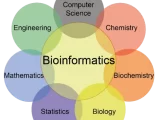
Exploring Systems and Computational Biology: A Comprehensive Overview
February 22, 2025Systems and computational biology is a rapidly emerging interdisciplinary field that integrates advanced computational methodologies and systems-level analyses to unravel complex biological processes. This innovative discipline bridges the gap between mathematics, computer science, and biology, enabling a holistic understanding of intricate biological mechanisms. By leveraging computational and quantitative techniques, researchers can address fundamental biological questions, including cellular information processing and the structural organization of biological networks.
At its core, systems and computational biology follows the principles of “3 Ds”—description, distillation, and design—widely adopted at institutions like MIT. Researchers systematically collect molecular- or cellular-level data in various defined states, employ computational algorithms to distill vast datasets into meaningful insights, and utilize these findings to design and manipulate biological systems for applications such as drug discovery and personalized medicine.
Several academic institutions, including UCLA and the University of Pittsburgh, have developed specialized programs in computational and systems biology, fostering interdisciplinary collaborations and the advancement of innovative analytical tools. As the field progresses, its potential impact on biological research and therapeutic development continues to grow exponentially.
Distinction Between Systems Biology and Computational Biology
While closely related, systems biology and computational biology serve distinct yet complementary roles in understanding biological complexity.
Systems Biology
- Focuses on a holistic approach to studying biological systems by integrating diverse datasets.
- Aims to decipher the interactions among system components, leading to emergent biological properties and behaviors.
- Utilizes experimental data, mathematical models, and computational simulations to predict system responses.
- Common methodologies include:
Computational Biology
- Primarily concerned with developing computational algorithms and models to analyze biological data.
- Extracts insights from complex datasets, facilitating a bridge between experimental biology and theoretical disciplines.
- Employs techniques such as:
- Machine learning and artificial intelligence
- Bioinformatics and genomics
- Statistical modeling and data mining
While systems biology focuses on understanding the overall behavior of biological systems, computational biology provides the necessary analytical tools and algorithms to process biological data effectively. These fields intersect in areas such as metabolic network analysis, disease modeling, and synthetic biology, contributing to advancements in medicine and biotechnology.
Key Concepts and Techniques in Systems and Computational Biology
Bioinformatics
Bioinformatics involves the use of computational techniques to manage and interpret biological data. It integrates computer science, statistics, and biology to analyze DNA sequences, protein structures, and gene expression patterns. Common bioinformatics applications include sequence alignment, phylogenetic tree construction, and predictive modeling of biological functions.
Genomics
Genomics is the comprehensive study of an organism’s entire genetic material. With advances in high-throughput sequencing technologies, genomics enables researchers to:
- Map and analyze genetic variations.
- Conduct comparative genomic studies.
- Explore functional genomics for gene-disease associations.
Proteomics
Proteomics focuses on the large-scale study of proteins, including their structure, function, and interactions. As proteins are key functional molecules in cells, proteomics plays a crucial role in:
- Identifying therapeutic targets.
- Understanding metabolic pathways.
- Investigating post-translational modifications using techniques such as mass spectrometry.
Epigenomics
Epigenomics examines gene expression modifications that do not involve changes in DNA sequence but rather involve chemical markers such as DNA methylation and histone modifications. These regulatory mechanisms are critical in development, aging, and disease progression.
Metabolic Network Modeling
Metabolic network modeling integrates multi-omics data to simulate and predict metabolic processes within cells. This approach is valuable in optimizing metabolic engineering strategies, understanding disease metabolism, and advancing synthetic biology applications.
Computational Approaches and Tools
Machine Learning and Artificial Intelligence
Artificial intelligence and machine learning algorithms are transforming computational biology by identifying complex patterns in biological data. Key applications include:
- Predicting protein structures and gene interactions.
- Analyzing large-scale genomic and transcriptomic data.
- Enhancing disease diagnosis through AI-driven biomarker discovery.
Network Analysis
Network analysis provides insights into biological interactions by representing relationships between genes, proteins, and metabolites. Key network-based approaches include:
- Protein-protein interaction networks.
- Gene regulatory network modeling.
- Metabolic pathway analysis using graph theory.
Phylogenetics
Phylogenetics studies evolutionary relationships among organisms by constructing phylogenetic trees. Computational tools facilitate:
- Comparative genomic analysis.
- Molecular evolution studies.
- Classification of new species based on genetic similarities.
Applications in Biology and Medicine
Precision Medicine
Computational biology is revolutionizing precision medicine by:
- Identifying genetic mutations associated with diseases.
- Predicting patient-specific drug responses.
- Developing targeted therapies based on genomic profiling.
Single-Cell Analysis
Single-cell technologies, combined with computational biology, enable researchers to study individual cellular behaviors, revealing insights into:
- Cell heterogeneity in disease states.
- Tumor microenvironments.
- Developmental biology and stem cell differentiation.
Synthetic Biology
Synthetic biology utilizes computational modeling to design and engineer new biological systems. Applications include:
- Constructing synthetic gene circuits.
- Designing biosensors for environmental monitoring.
- Developing programmable organisms for pharmaceutical production.
Clinical Research
Computational biology accelerates clinical research by:
- Identifying potential drug targets.
- Predicting drug efficacy and side effects.
- Enhancing biomarker discovery for early disease detection.
Interdisciplinary Collaboration and Future Directions
Education and Training
The interdisciplinary nature of systems and computational biology necessitates comprehensive education programs combining biology, mathematics, engineering, and computer science. Universities worldwide are establishing specialized curricula to train future scientists in cutting-edge computational techniques and systems-level biological analysis.
Future Prospects
The rapid advancements in artificial intelligence, high-throughput sequencing, and integrative multi-omics approaches will continue to shape the future of computational and systems biology. Emerging areas such as quantum computing in bioinformatics, digital twins for personalized healthcare, and AI-driven drug discovery hold immense potential for transforming life sciences and medicine.
Conclusion Systems and computational biology provide powerful frameworks for understanding biological complexity and driving biomedical innovation. By integrating diverse disciplines and computational techniques, these fields enable groundbreaking discoveries that enhance our knowledge of life and improve healthcare outcomes. Continued interdisciplinary collaboration and technological advancements will further propel the impact of systems and computational biology in the years to come.

















